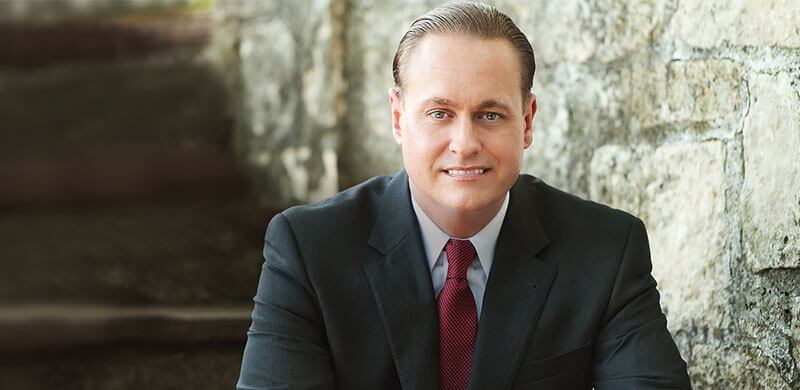
If you or a loved one has suffered a spinal cord injury due to a slip and fall accident, you may be entitled to seek justice and compensation for your damages. However, initiating a lawsuit can be a complex and overwhelming process. That’s where this guide comes in. In this article, we will provide you with comprehensive information on how to navigate the legal landscape and take the necessary steps to pursue a spinal cord lawsuit after a slip and fall accident.
From gathering evidence to determining liability, we will break down the key elements you need to understand to build a strong case. We will also discuss the importance of hiring an experienced personal injury attorney who specializes in spinal cord injuries and can guide you through the legal process.
At The Law Firm of Aaron Herbert, our mission is to empower individuals like you with the knowledge and resources needed to seek justice and find closure. Our commitment to your cause is unwavering, and we hope this guide will serve as a valuable tool in your pursuit of justice.
So, let’s delve into the world of spinal cord lawsuits and help you take the first step towards achieving the justice you deserve.
The legal basis for a spinal cord lawsuit
To initiate a spinal cord lawsuit after a slip and fall accident, you must establish the legal basis for your claim. In most cases, these lawsuits fall under the category of premises liability, holding the property owner or occupier responsible for your injuries.
To succeed in a premises liability claim, you must demonstrate that the property owner or occupier owed you a duty of care, that they breached this duty, and that their negligence directly caused your slip and fall accident and subsequent spinal cord injury. This can be challenging, as you need to prove that the property owner either knew or should have known about the hazardous condition that caused your fall.
In some cases, you may also have a claim against a third party, such as a contractor or maintenance company responsible for the property’s upkeep. Identifying all potentially liable parties is crucial to ensure you can pursue compensation from all available sources.

Steps to take immediately after a slip and fall accident
After a slip and fall accident, taking prompt action is vital to protect your rights and strengthen your case. Here are the essential steps you should take:
1. Seek medical attention: Your health and well-being should be your top priority. Even if you believe your injuries are minor, it is crucial to seek medical attention immediately. Some injuries may not be immediately apparent, and a medical professional can properly assess your condition.
2. Document the scene: If possible, gather evidence at the accident scene. Take photographs of the hazardous condition that caused your fall, such as a wet floor, uneven pavement, or inadequate lighting. Also, try to obtain contact information from any witnesses who saw the accident occur.
3. Report the incident: Notify the property owner or manager about the accident as soon as possible. Request that they create an incident report and be sure to obtain a copy for your records. This report can serve as crucial evidence later on.
By following these initial steps, you can lay the groundwork for a strong spinal cord lawsuit. Remember, the more evidence you have to support your claim, the stronger your case will be.
Gathering evidence for your spinal cord lawsuit
Building a strong case requires gathering compelling evidence to support your claim. Here are some crucial pieces of evidence you should collect:
1. Medical records: Obtain copies of all medical records related to your slip and fall accident and subsequent spinal cord injury. These records should include diagnostic tests, treatment plans, rehabilitation notes, and any other documentation that demonstrates the extent of your injuries.
2. Witness statements: Interview witnesses who saw the accident occur and collect their statements. These statements can provide valuable insight into the conditions leading up to the accident and help establish liability.
3. Surveillance footage: If the slip and fall accident occurred in a public place or a property with security cameras, request access to the surveillance footage. This footage can provide visual evidence of the hazardous condition and how it contributed to your fall.
4. Expert opinions: Consult with medical experts and other specialists who can provide professional opinions on the cause and impact of your spinal cord injury. Their expertise can strengthen your case and lend credibility to your claims.
Remember, the strength of your evidence can make or break your spinal cord lawsuit. By gathering as much relevant information as possible, you increase your chances of success.

Finding the right attorney for your case
Navigating the legal process can be challenging, especially when dealing with complex personal injury cases like spinal cord lawsuits. Hiring an experienced personal injury attorney who specializes in spinal cord injuries is crucial to ensure you have the best possible representation.
When choosing an attorney, consider the following factors:
1. Experience: Look for an attorney with a proven track record of handling spinal cord injury cases. They should have extensive experience in negotiating settlements and taking cases to trial, if necessary.
2. Expertise: Spinal cord injuries require specialized knowledge and understanding. Ensure that the attorney you choose has a deep understanding of these types of injuries and the associated legal complexities.
3. Resources: A reputable attorney should have the resources necessary to thoroughly investigate your case, gather evidence, and build a strong argument on your behalf.
4. Communication: Effective communication is essential throughout the legal process. Choose an attorney who is responsive, keeps you informed, and explains complex legal concepts in a way that you can understand.
Consult with multiple attorneys before making your decision. Most personal injury attorneys offer free consultations, allowing you to discuss your case and assess whether they are the right fit for you.

The importance of medical documentation in a spinal cord lawsuit
Medical documentation plays a crucial role in a spinal cord lawsuit. It establishes the link between your slip and fall accident, your spinal cord injury, and the damages you have suffered. Here’s why medical documentation is essential:
1. Provides evidence of your injuries: Medical records, diagnostic tests, and treatment plans serve as tangible evidence of the severity and impact of your spinal cord injury. They help establish the damages you are entitled to recover.
2. Demonstrates the need for ongoing care: Spinal cord injuries often require long-term medical treatment and rehabilitation. Medical documentation outlines the anticipated costs and care needed, ensuring you can pursue appropriate compensation.
3. Validates your claims: Insurance companies and opposing counsel may challenge the legitimacy of your injuries. Comprehensive medical documentation strengthens your case by proving the extent and validity of your claims.
To ensure you have the necessary medical documentation, it is essential to follow all recommended treatments, attend follow-up appointments, and maintain a detailed record of your medical expenses.
Calculating damages in a spinal cord lawsuit
Calculating damages in a spinal cord lawsuit involves assessing the economic and non-economic losses you have suffered. Here are the primary types of damages typically pursued in these cases:
1. Medical expenses: This includes past, current, and anticipated future medical costs related to your spinal cord injury. It encompasses hospital bills, surgeries, medications, rehabilitation, assistive devices, and ongoing care.
2. Lost wages and earning capacity: If your spinal cord injury has caused you to miss work or has limited your ability to work in the future, you may be entitled to compensation for lost wages and diminished earning capacity.
3. Pain and suffering: Non-economic damages, such as physical pain, emotional distress, loss of enjoyment of life, and mental anguish, are also considered in a spinal cord lawsuit. These damages aim to compensate for the intangible losses you have experienced.
4. Rehabilitation and long-term care: Spinal cord injuries often require extensive rehabilitation, long-term care, and specialized equipment. Compensation can be sought for these ongoing expenses.
Your attorney will work with you to determine the appropriate damages to pursue in your specific case. It is crucial to consider both your immediate and long-term needs when calculating damages.

Dealing with insurance companies and settlement negotiations
In many spinal cord lawsuits, you will be dealing with insurance companies representing the responsible party or parties involved. Insurance companies are primarily concerned with minimizing their financial liability, which can make the negotiation process challenging.
Here are some tips for dealing with insurance companies and settlement negotiations:
1. Consult with an attorney: Having legal representation is crucial when negotiating with insurance companies. An experienced attorney can protect your rights, advocate on your behalf, and ensure you receive fair compensation.
2. Document all communication: Keep a record of all communication with insurance adjusters, including phone calls, emails, and letters. This documentation can be valuable if disputes arise later on.
3. Be cautious with recorded statements: Insurance adjusters may request a recorded statement from you. It is crucial to consult with your attorney before providing any statements to ensure you do not inadvertently harm your case.
4. Do not accept early offers: Insurance companies may try to settle quickly and for a low amount. It is important to allow your attorney to assess the full extent of your damages and negotiate for a fair settlement that adequately compensates you.
Remember, insurance companies are not on your side. Their primary goal is to protect their bottom line. Having a skilled attorney by your side ensures that your rights and interests are protected throughout the negotiation process.
Going to trial: What to expect in a spinal cord lawsuit
While most spinal cord lawsuits are resolved through settlement negotiations, some cases may proceed to trial. It is essential to understand what to expect if your case reaches this stage.
During a trial, your attorney will present your case to a judge and jury, aiming to prove the liability of the responsible party and the damages you have suffered. This involves presenting evidence, calling witnesses, cross-examining opposing witnesses, and delivering persuasive arguments.
While going to trial can be a lengthy and complex process, it provides an opportunity for you to present your case in a courtroom and seek a favorable verdict. Your attorney will guide you through each step of the trial and ensure your rights are protected.
Conclusion: Seeking justice and moving forward after a spinal cord lawsuit
Slip and fall accidents can have devastating consequences, particularly when it comes to spinal cord injuries. Understanding the impact of these injuries is crucial in building your case. Spinal cord injuries can result in partial or complete paralysis, affecting your mobility, independence, and quality of life.
When your spinal cord is damaged due to a slip and fall accident, it can lead to a range of complications, such as loss of sensation, muscle weakness, and even bowel or bladder dysfunction. These injuries often require extensive medical treatment, rehabilitation, and long-term care.
Proving the severity and extent of your spinal cord injury is essential in establishing the damages you have suffered. Medical records, expert opinions, and testimony from healthcare providers will play a crucial role in demonstrating the impact of the injury on your life.



















